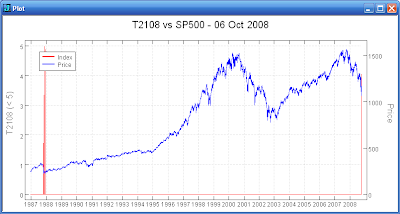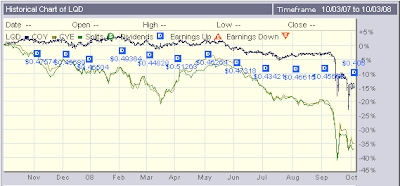
There are very few alternate asset classes that have worked over the past year. Total return/hedged equity funds (HSGFX) are down moderately over the past year. Risk arbitrage funds (MERFX, ARBFX) are also down moderately. Long only commodity funds (DBC) soared into mid-year, but have since collapsed. The carry trade (DBV) went from modest losses at mid-year to big losses recently. One thing which seems to be working is managed futures (RYMFX). Take a look at the chart above to see a comparison of the mentioned funds over the past year.

















